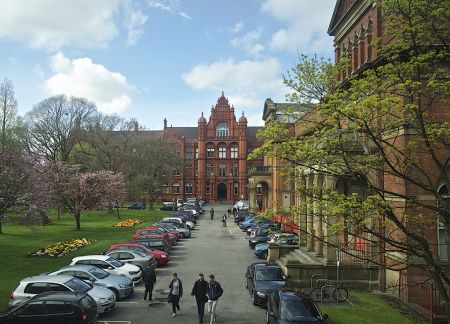
UK's ageing bridges focus of research symposium
Wednesday 13 April 2016
BRITAIN’s ageing Victorian infrastructure came under the microscope at a gathering of some of the leading minds in bridge engineering at the University of Salford.
Experts in masonry arch bridges – which make up almost 40% of road, rail and canal bridges - expressed their concern for the future viability and safety of thousands of bridges at a symposium organised by the Civil Engineering Research Centre.
“The challenges to keeping UK plc moving are enormous,” explained Jonathan Haynes, Director of Civil Engineering and convenor of the meeting, which united 80 delegates from research centres with private sector players like AECom, Laing O’Rourke, Costain and Highways England.
“Most masonry (brick) bridges are over 150 years old and well past their design life expectancy, and to make matters worse the EU keeps increasing the allowable wheel loads on trucks and trains keep going faster.”
Pioneering work
Salford is pioneering in the field, with a unique full scale arch test facility in the Heavy Structures Laboratory, and a glittering track record of research and training inspired by Prof Clive Melbourne, who founded the International Conference on Arch Bridges in the 1980s.
And masonry arches, are still relevant, not least because they almost never fail (in contrast to bridges built in other more modern materials) and are the most robust structural bridge form.
“We do unspeakable things to them but they still stand up,” adds Jon Haynes. “But that doesn't mean they aren't wearing out, and many now need rehabilitation.
“So future research must look at how best we assess, strengthen and repair this infrastructure.”
Future direction of research
Delegates from Imperial College, Sheffield, Leeds, Liverpool, Newcastle and UWE, considered the use of computer modelling, future designs, and training needs for engineers on the specific problems encountered in masonry bridges.
The meeting agreed in principle that:
- there is a need for an industry standard non-destructive survey method to see displacement of bridges under load and identify hidden internal structure
- reintroduction of new masonry bridges would require reskilling of construction workers in the art of arch building, and develop some innovative fast construction techniques (such as pre-cast)
- bridge ‘fitness’ is still difficult to assess and computer modelling is hugely time demanding and impossible to validate without large-scale physical testing.
-The University of Salford’s Civil Engineering programmes are in the top 200 in the latest QS World university Rankings.





